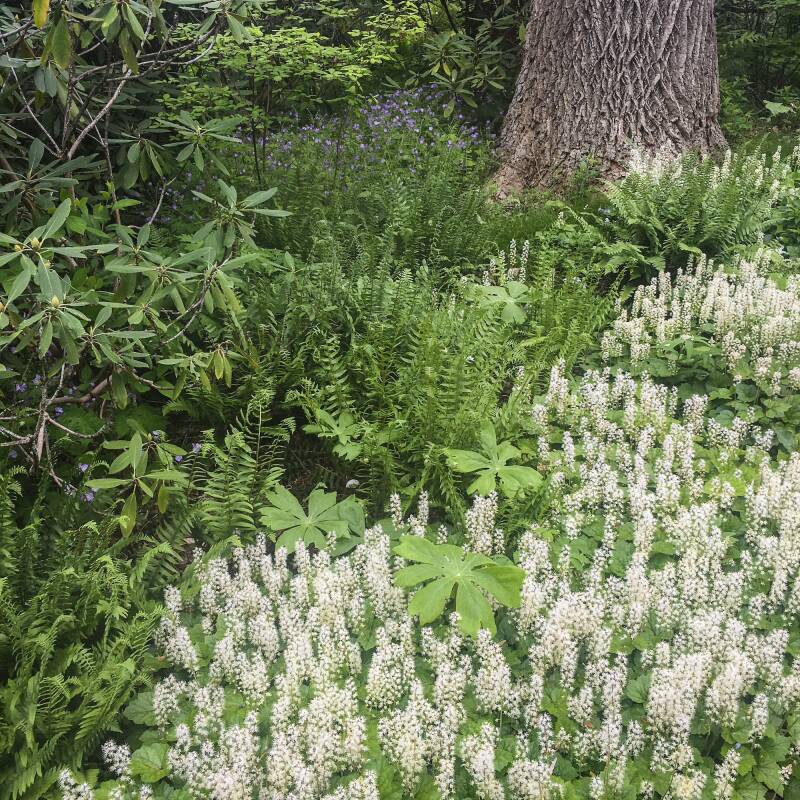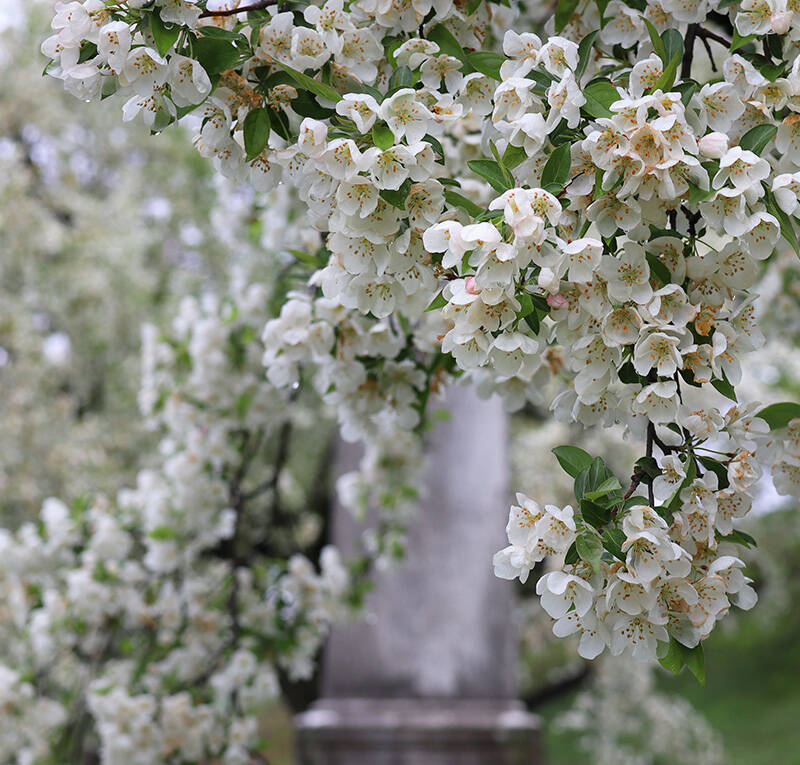What native flowering vine is perfumed, profuse, and in bloom in early spring just when we need floral encouragement the most? It’s yellow jessamine, or Carolina jasmine—Gelsemium sempervirens. (Its species name—“always living”—refers to Gelsemium’s glossy, evergreen foliage.) This is a cascading, fast-growing vine that makes a spectacular bower over doorways, softening hard fence edges, and stopping passersby, even in their preoccupied, city tracks. It is also one of the most toxic plants on the planet.
But don’t panic. Unless you’re a Russian whistleblower.
Photography by Marie Viljoen.

Growing natively from Guatemala through Virginia, yellow jessamine’s first stop in the US is Texas, where it is often the first flower to bloom in the new year. It is widely distributed in the Southern US but also in the nursery trade, which has spread it beyond its natural range. It shows remarkable cold hardiness for a plant also at home in Central America. (There are three Gelsemium species: the others are G. rankinii, native to Southeastern US, and which has no scent; and G. elegans, native to East and Southeast Asia.)

While European honeybees are drawn to the nectar-rich flowers of Gelsemium, especially if there is no other food source, the nectar in high doses may be toxic to them. At least, this is the chatter in concerned bee-keeping circles, but it is hard to find a study that confirms this—because there is no such study. Still, with ancient, anecdotal stories circulating via cut-and-paste (and cemented into truth by an entry on Wikipedia with a cul-de-sac of a citation), they are hard to dismiss completely.
But what about native pollinators and yellow jessamine?

Yellow jessamine might actively benefit native bumble bees: A 2010 study concluded that “gelsemine, a nectar alkaloid found in Gelsemium sempervirens, lessens the severity of gut pathogen infections in bumble bees.” Self-medicating bees. I have seen fat carpenter bees besieging yellow jessamine, and “robbing” the flowers by puncturing the base of their nectaries from the outside, to suck out sweetness, leaving less food for the slimmer Eastern bumble bees that enter politely from the flower’s mouth.

Gelsemium Toxicity
The toxic alkaloids in all Gelsemium species include gelsemine, but dozens of other alkaloids have been isolated from the genus, which has been studied extensively, pharmacologically. For humans and other animals, all Gelsemiums are harmful (and may be lethal) if ingested in very high, very unlikely doses. These could be self-administered deliberately, by someone in despair, or in search of migraine relief: Sometime in the second half of the 18th century, the author Sir Arthur Conan Doyle purposefully overdosed on Gelsemium in order to observe its effects on headache relief, in different quantities. He documented his findings and submitted them to the British Medical Journal in 1879.
The poison may also be ingested via foul play: In late 2011 Long Liyuan, a 49-year old Chinese business tycoon, died in Guangdong after eating a stew laced with Gelsemium elegans. Did this give the Kremlin ideas? Because in 2012, after he died unexpectedly in Surrey, England, at the age of 44, an autopsy report showed that Russian whistleblower Aleksander Perepilichnyy had traces of the same poison in his stomach.

The actual risk of poisoning from yellow jessamine for most people (and their pets) is minimal. Browsers, like herbivore cows and goats and horses, could potentially eat too much, accidentally. There is one documented US case, often-cited but frustratingly inaccessible, of a child dying from eating yellow jessamine in 1979.
The root is the most poisonous part of the plant, and well out of reach. The plant has been studied pharmacologically for possible anti-tumour therapy. Native Americans used Gelsemium for pain relief, and many other ailments, from respiratorial to neurological. (Bear in mind that the line between medicine and poison is very fine.) The Asian species G. elegans, sees more documented poisonings, because it is misidentified more often by people foraging for another plant’s roots to make herbal tea or therapeutic soups.

Cheat Sheet
- Yellow jessamine is Gelsemium sempervirens, and is one of three species of Gelsemium, worldwide.
- It is an evergreen, flowering vine native from Central America through the Southern US.
- It makes a dramatic spring statement.
- Exceptionally useful for covering fences and arbors quickly.
- Yellow jessamine blooms for two to three weeks in late winter and early spring.
- The yellow flowers are deeply perfumed and highly attractive to all bees.
- Native bumble bees may benefit from the protective effects the nectar.
- Yellow jessamine may be toxic in large doses to European honeybees. It may also not be.
- All Gelsemiums are toxic, but must be ingested in quantity to have ill effect.

Keep It Alive
- Yellow jessamine is hardy from USDA Zones 7 – 10
- Plant in full sun for the most flowers.
- Plant in a spot sheltered from winter wind.
- Give yellow jessamine a sturdy support: A wall, a fence, or strong pergola are ideal.
Keep Yourself Alive
- Unless you eat the plant, the risk of illness, or worse, from yellow jessamine is minimal.












Have a Question or Comment About This Post?
Join the conversation (0)